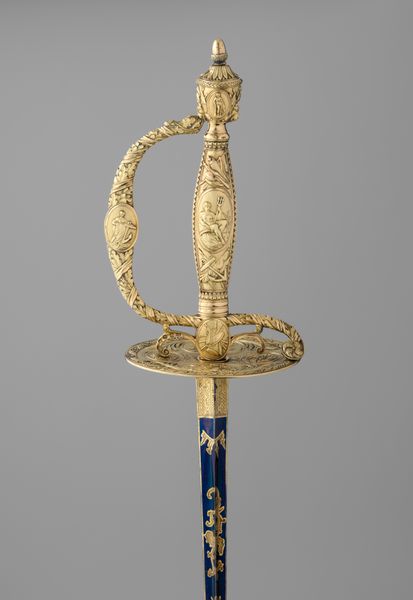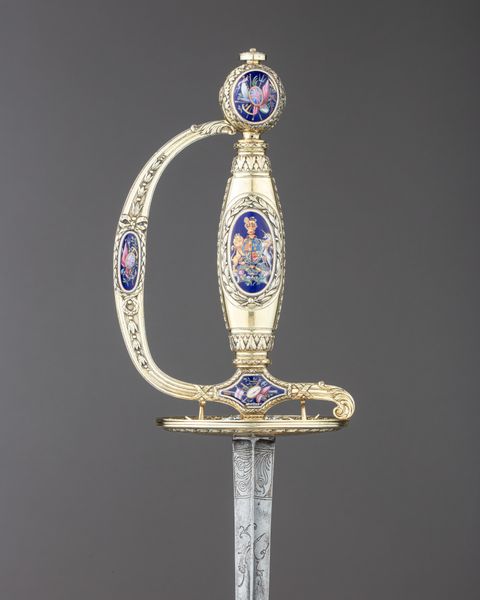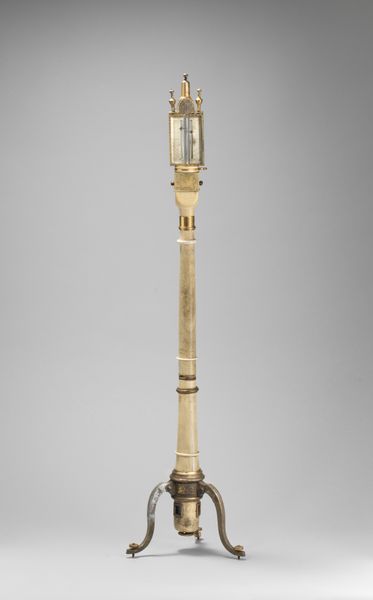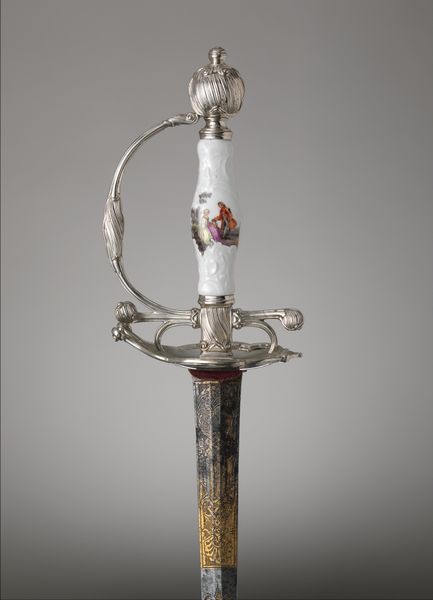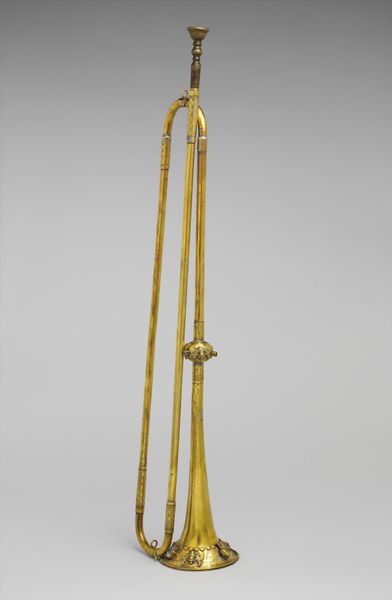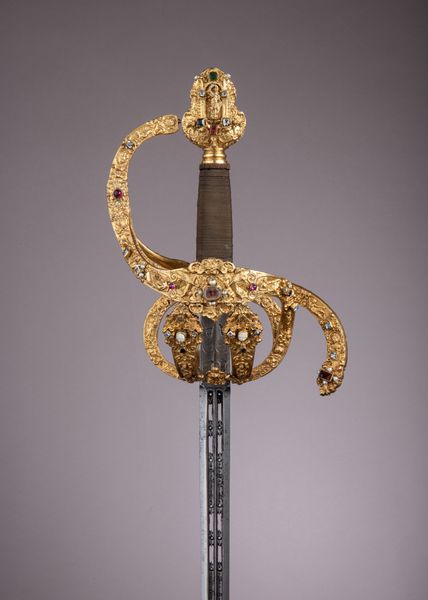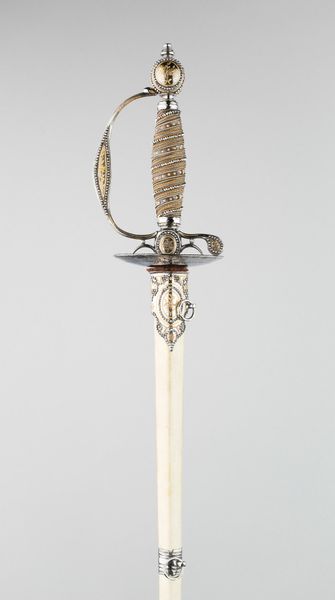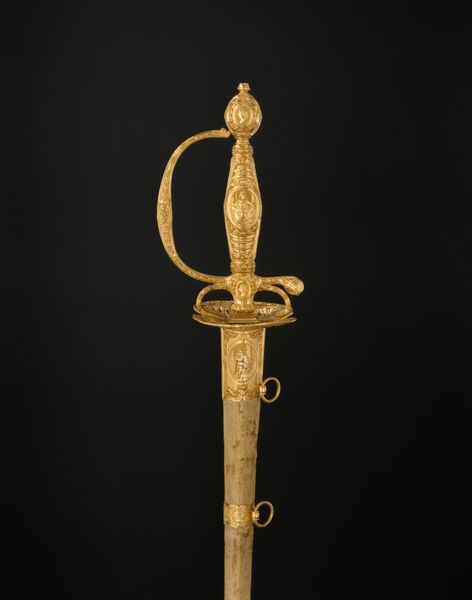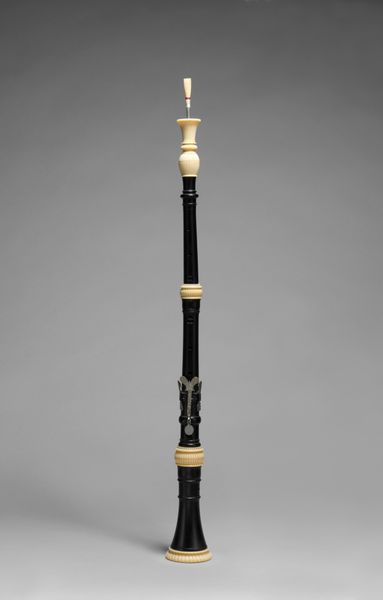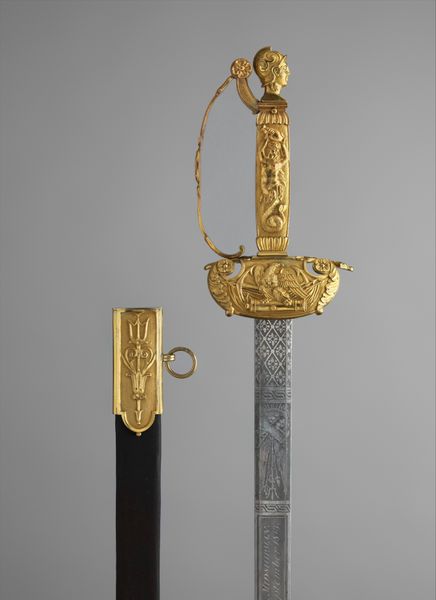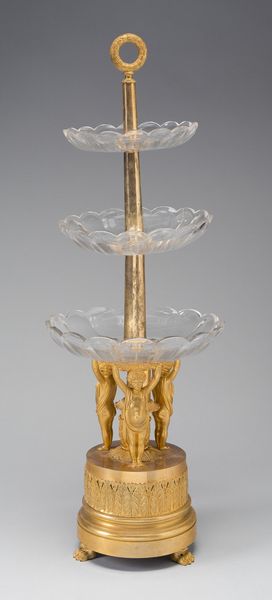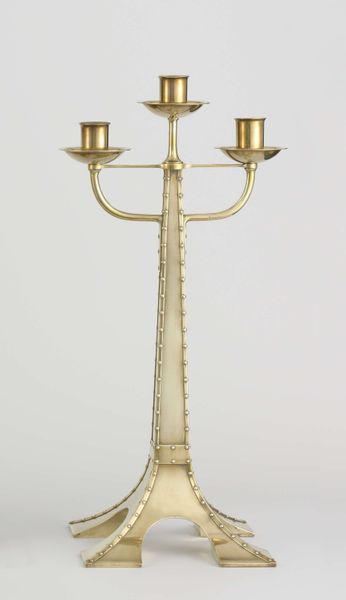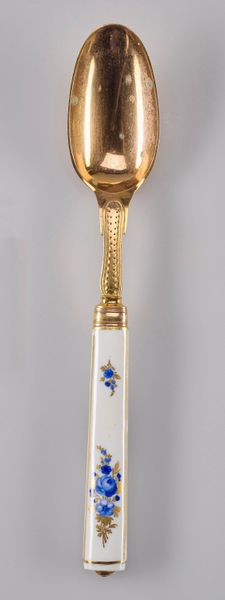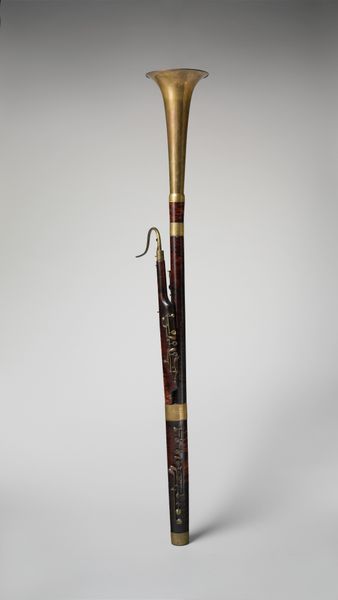
Congressional Presentation Sword with Scabbard of Colonel Marinus Willett (1740–1830) 1785 - 1786
0:00
0:00
Dimensions: sword L. 39 5/8 in. (100.6 cm); scabbard L. 33 1/4 in. (84.5 cm)
Copyright: Public Domain
Curator: Here we have an exquisite congressional presentation sword dating from 1785 to 1786, crafted for Colonel Marinus Willett. The elaborate detailing is really quite striking. Editor: My first thought is, wow, that’s ornamental! Not something you'd see on the battlefield, certainly. It speaks volumes about status, power, and commemoration rather than practical warfare. Curator: Indeed. It’s primarily constructed from metal with extensive gilding and engraving. Note the balance between negative and positive space, and how that tension contributes to the overall visual impact. The artist effectively employs baroque design principles in rendering each element. Editor: Looking at it from a social perspective, the sword tells a nuanced story about early America. Willett's military service is being celebrated here, yes, but it also points towards the emergence of a new aristocracy—a reward, not just for service, but also for aligning with the dominant power structures. It represents the spoils of war, essentially. Curator: Consider, too, the linear quality of the engraving. Observe the elegant curve of the guard, balanced by the geometry of the blade itself. These formal properties generate a satisfying visual harmony. Editor: That "harmony" papers over some complicated issues, though. Swords were potent symbols, yes, but their power was maintained through violence and oppression. These types of honorific objects obscure the lived experiences of so many during that time. Colonization was a violent undertaking. Curator: I agree it's complex, yet the artisanship is undeniable. The design itself exemplifies skillful use of form, balance and, color. Editor: And it underscores how intertwined symbols of honor are with the very systems that perpetuate inequity, then and now. Thanks for bringing attention to its materiality and form; they are certainly a critical starting point from which to have a broader discussion.
Comments
No comments
Be the first to comment and join the conversation on the ultimate creative platform.
